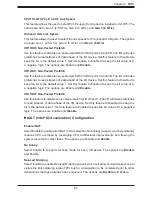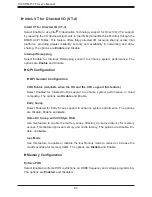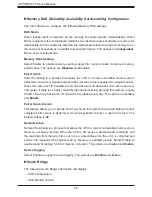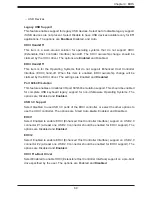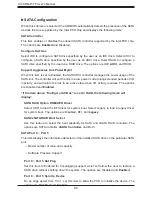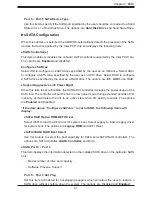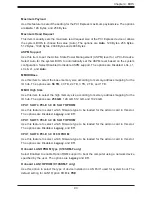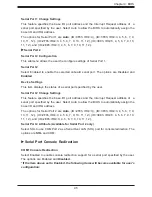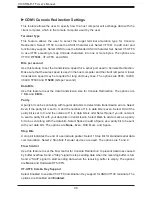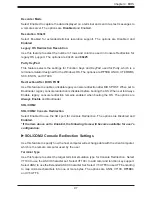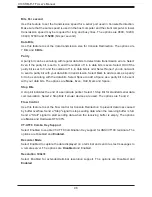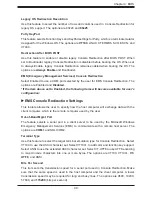
Chapter 4: BIOS
99
Legacy OS Redirection Resolution
Use this feature to select the number of rows and columns used in Console Redirection for
legacy OS support. The options are 80x24 and
80x25
.
Putty KeyPad
This feature selects Function Keys and KeyPad settings for Putty, which is a terminal emulator
designed for the Windows OS. The options are
VT100
, LINUX, XTERMR6, SCO, ESCN, and
VT400.
Redirection After BIOS POST
Use this feature to enable or disable legacy Console Redirection after BIOS POST. When
set to Bootloader, legacy Console Redirection is disabled before booting the OS. When set
to Always Enable, legacy Console Redirection remains enabled when booting the OS. The
options are
Always Enable
and Bootloader.
EMS (Emergency Management Services) Console Redirection
Select Enabled to use a COM port selected by the user for EMS Console Redirection. The
options are Enabled and
Disabled.
*If the item above set to Enabled, the following items will become available for user's
configuration:
EMS Console Redirection Settings
This feature allows the user to specify how the host computer will exchange data with the
client computer, which is the remote computer used by the user.
Out-of-Band Mgmt Port
The feature selects a serial port in a client server to be used by the Microsoft Windows
Emergency Management Services (EMS) to communicate with a remote host server. The
options are
COM1
and SOL
/
COM2.
Terminal Type
Use this feature to select the target terminal emulation type for Console Redirection. Select
VT100 to use the ASCII character set. Select VT100+ to add color and function key support.
Select ANSI to use the extended ASCII character set. Select VT-UTF8 to use UTF8 encoding
to map Unicode characters into one or more bytes. The options are VT100, VT100+,
VT-
UTF8
, and
ANSI.
Bits Per Second
This item sets the transmission speed for a serial port used in Console Redirection. Make
sure that the same speed is used in the host computer and the client computer. A lower
transmission speed may be required for long and busy lines. The options are 9600, 19200,
57600, and
115200
(bits per second).
Summary of Contents for X10SRM-F
Page 1: ...USER MANUAL Revision 1 0a X10SRM F TF...
Page 8: ...8 X10SRM F TF User Manual Notes...
Page 11: ...11 Chapter 1 Introduction Figure 1 2 X10SRM TF Motherboard Image...
Page 66: ...66 X10SRM F TF User Manual Notes...
Page 116: ...X10SRM F TF User Manual 116 Notes...
Page 122: ...X10SRM F TF User Manual 122 Notes...

